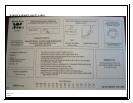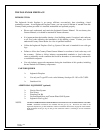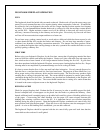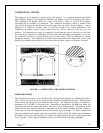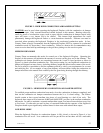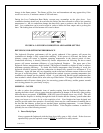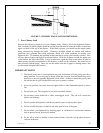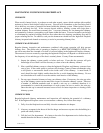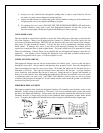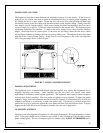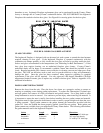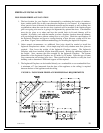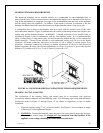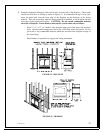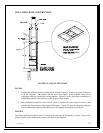
Version: 6.0
16
MAINTAINING YOUR INGLENOOK FIREPLACE
CREOSOTE
When wood is burned slowly, it produces tar and other organic vapors which combine with expelled
moisture to form a black deposit called creosote. Creosote will accumulate on the flue lining and if
left to build up, can create a potential fire hazard within the chimney system. When ignited, creosote
makes an extremely hot fire. If the creosote deposit within a chimney system were large then a
resultant chimney fire would burn extremely hot. A creosote chimney fire can damage the chimney
and potentially overheat a surrounding wood frame within the house. Creosote formation can be kept
to a minimum by routinely building small hot fires rather than slow burning, smoldering fires and by
proper refueling the fire. In addition, each year the homeowner should have the Inglenook Fireplace
chimney inspected and cleaned as necessary to assist in preventing chimney fires.
CHIMNEY MAINTENANCE
Regular chimney inspection and maintenance combined with proper operation will help prevent
chimney fires. The golden rule of operating a fireplace is to KEEP THE CHIMENY CLEAN. Do
not allow more than one sixteenth of an inch of creosote buildup in the Inglenook Fireplace chimney.
The amount of creosote created by operating the Inglenook Fireplace will depend on variables such as
the frequency of use and the type of fire that is routinely burnt. Country Flame recommends:
1. Inspect the chimney system weekly or before each use. From this the operator will gain
knowledge of how often it will be necessary to clean or have the chimney cleaned.
2. Hire a qualified chimney sweep to clean the Inglenook Fireplace and chimney system at least
once a year. If the owner wants to perform self-cleaning, Country Flame recommends using
a stiff plastic or non-metallic brush on the inside walls of the chimney. A metal brush, if
used, should be sized slightly smaller than the flue to avoid damaging the chimney. Do not
use a brush that will scratch or scar the stainless steel interior of the chimney.
3. Do not expect chemical cleaners to keep your chimney clean. If necessary, the rain cap at the
top of the chimney system can be removed to inspect or clean the chimney system. There are
a number of different methods used to attach a rain cap to a chimney therefore it is
recommended to consult the manufacture of such systems on how to remove the rain cap.
Once the rain cap is removed increased access allows for better inspection or cleaning of the
chimney system.
CHIMNEY FIRES
Regular Inglenook chimney maintenance and inspection will minimize the potential of a chimney
fire. If the Inglenook Fireplace owner ever encounters a chimney fire, follow these steps:
1. Fully close the fireplace doors and fully close the combustion air damper.
2. Alert any occupants in the house of the fire danger and ensure everyone exits the building in a
quick and orderly fashion.
3. Call the local fire department. It is better to have the fire department arrive before they are
needed then after the house is already in blazes.



